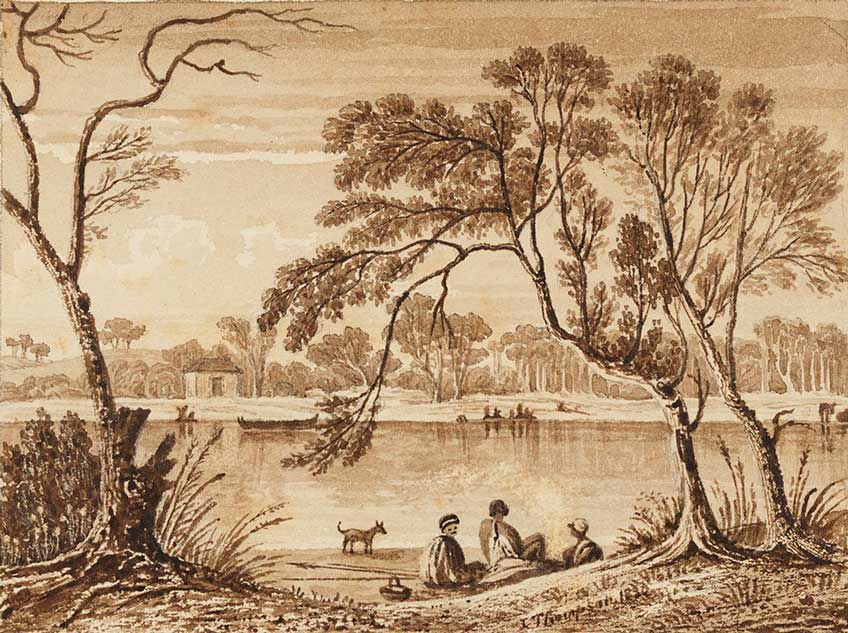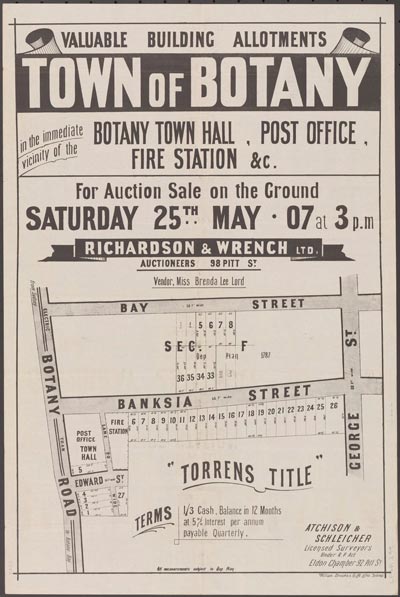Botany's earliest residents were the Aboriginal people who have lived in the Botany area for over 9,000 years.
It has been estimated that 1,000 to 1,200 Aboriginal people lived around the shores of Botany Bay.
After European settlement the name 'Botany' was adopted, the Aboriginal translation of 'Booralee' was often used. The village was often officially referred to as 'Booralee' and subsequent maps saw Botany bearing this name.
Today, nearby Booralee Park celebrates this important connection.
Captain James Cook first landed in Botany in 29 April 1770, when navigating his way around Australia on the Endeavour.
The ship's English botanist Joseph Banks spent several days on shore collecting vast numbers of specimens, that were previously unknown in Europe.
Botany was originally planned as an agricultural district, in the same way the surrounding suburbs were used for market gardens. However, it became an industrial area with fellmongers yards and slaughter works.
In 1809, Edward Redmond became the first recorded white settler in the Botany area, and the land was so swampy that he called his property Mudbank.

Mudbank Circa 1830
The famous Sir Joseph Banks Hotel was built in stages from 1840 and is now listed on the Register of the National Estate.
By 1850, a private zoo had been established in Botany and visitors could go horse riding, play cricket and football. In 1988, the Sir Joseph Banks Pleasure Gardens were refurbished with local industry contributions.

Botany Pleasure Gardens 1855

The Botany area was originally seen as a country retreat and later as a holiday destination, the suburb shifted gear as the colony grew. As the local population rose, so too did the demand for the establishment of local government services.
Botany Council placed considerable priority on residential development and prioritized better facilities including sports fields, golf courses, parks and recreational facilities catering for athletics, swimming, cricket, soccer, rugby and tennis and other outdoor activities.
Over the years residential and commercial population grew in step with each other.
With the coming of World War II and the expansion of the airport, which had been operating since the early 1920s, a three-storey height limit was imposed across the Botany area.
This has impacted the way the suburb has grow vertically and horizontally.
Medium density housing has always been a strong feature of the Botany Council area.
The history of the City of Botany Bay has been shaped by its location, within easy reach of the city of Sydney and near an abundant supply of water. Its initially remote location has seen it evolve = to the united community it is today, with strong ties to all of its past and present industries.
For further information, please contact us directly on 1300 132 970 or email at This email address is being protected from spambots. You need JavaScript enabled to view it.